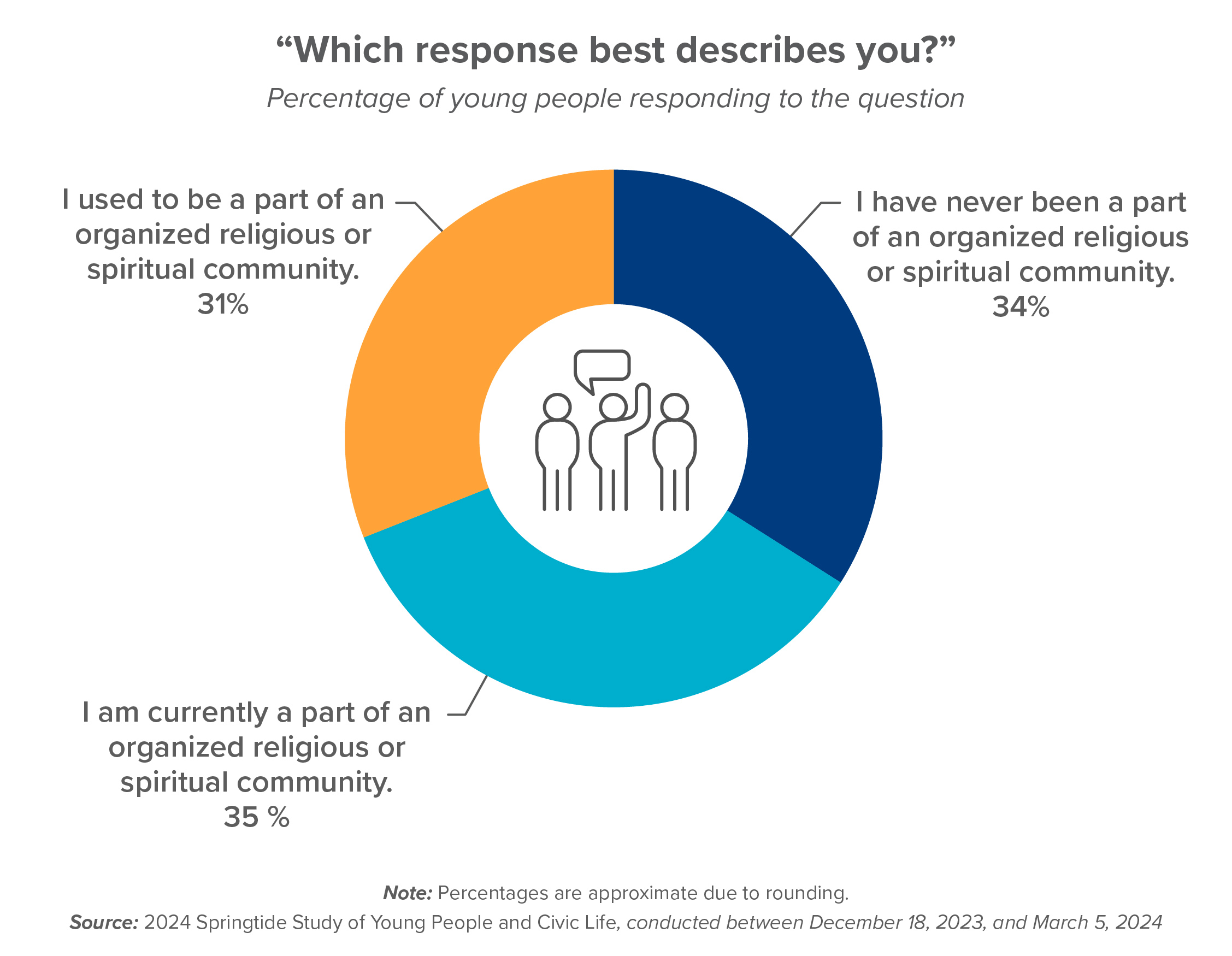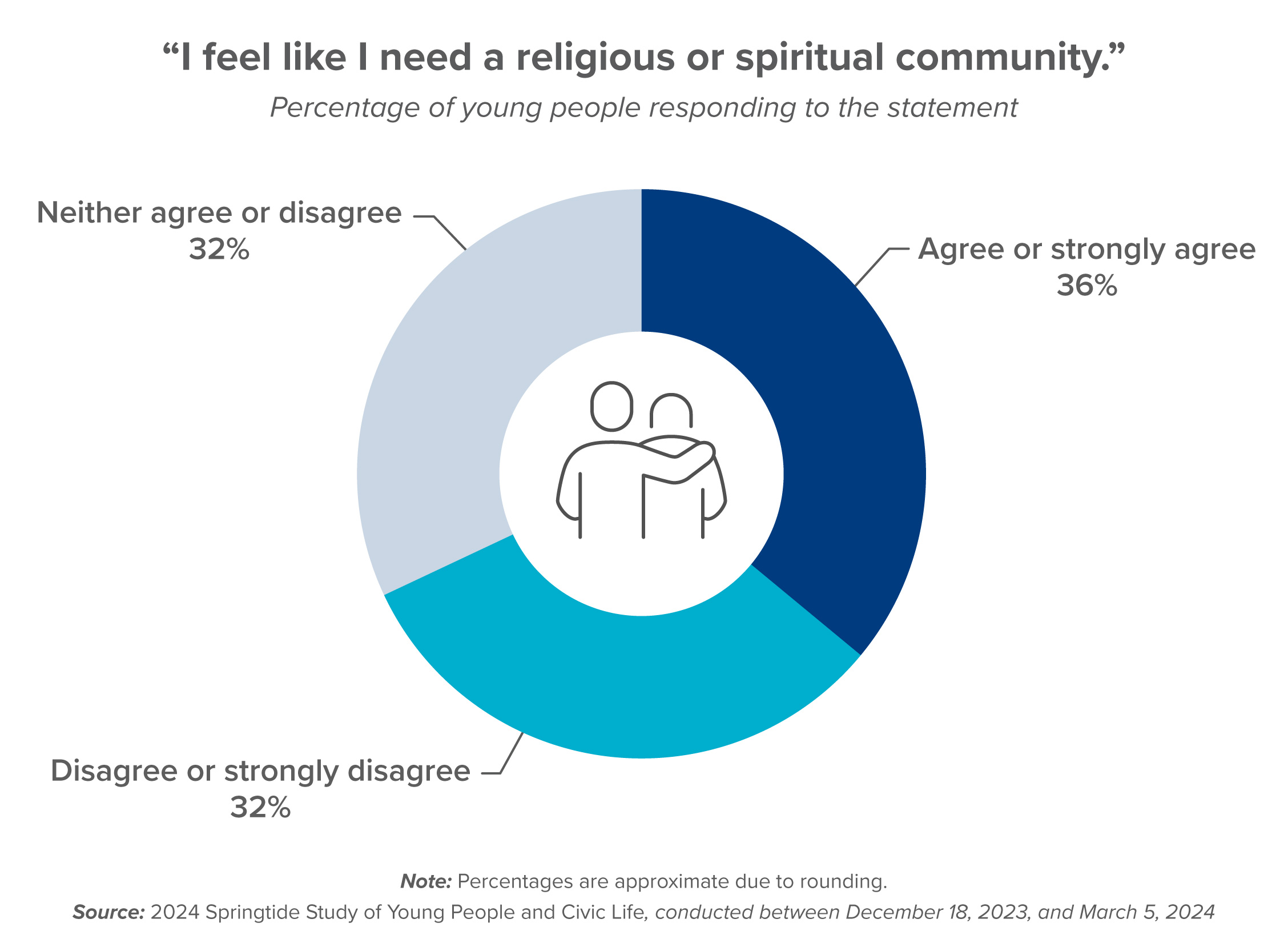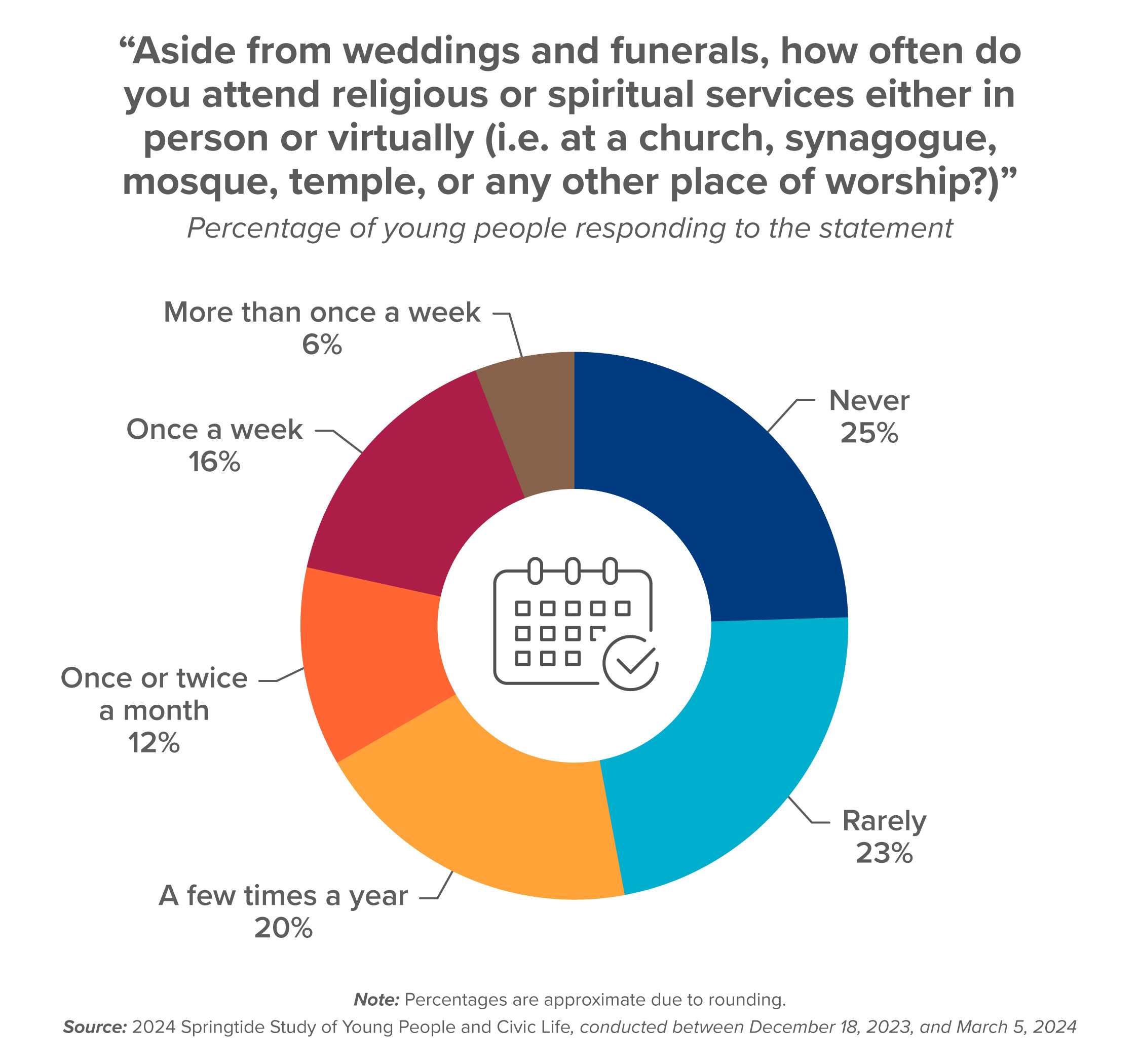
Religion and Spirituality among Teens and Young Adults: Community and Practice
Each year Springtide surveys thousands of young people between the ages of 13 and 25. Like previous years, our latest data show that young people continue to participate in religious and spiritual communities and practices.
COMMUNITY
Sixty-five percent of young people surveyed say they are not currently part of an organized religious or spiritual community. The 35% of survey respondents who belong to a religious or spiritual community report high rates of acceptance and belonging. Young people appear evenly split on whether they feel they need a religious or spiritual community.

Note: These statements were only shown to those who stated they were a part of a religious/spiritual community. The percentage shown combines those who responded “agree” or “strongly agree.”
Source: 2024 Springtide Study of Young People and Civic Life, conducted between December 18, 2023, and March 5, 2024

PRACTICE
As in previous years, our 2024 data show more than half of young people (68%) report attending religious or spiritual services a few times a year or less. Young people indicate more frequent participation in other practices they consider religious or spiritual, especially making or enjoying art and being in nature.

“While you may engage in the following everyday activities, how often do you engage in the following as religious or spiritual practices?”
Percentage of young people responding ‘daily’ or ‘weekly’
Source: 2024 Springtide Study of Young People and Civic Life, conducted between December 18, 2023, and March 5, 2024
See how young people are navigating civic life. Order Cultivating Care: How & Why Young People Participate in Civic Life to see our newest data on how and why young people create and sustain patterns of care in their civic lives and how adults can support them.
Note: See survey responses in the topline survey results and review methodology here.



